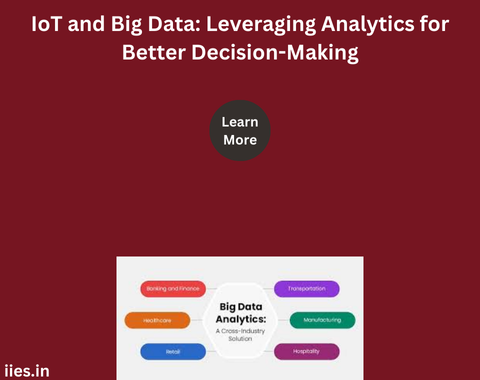
In today’s data-driven world, the intersection of the Internet of Things (IoT), embedded systems, and Big Data has become a pivotal force in shaping strategic decision-making across diverse sectors. As organizations increasingly deploy IoT devices, which are often powered by embedded systems, to collect real-time data from their operations, environments, and consumers, they generate an unprecedented volume of information. Coupled with the sophisticated analytical capabilities of Big Data technologies, this influx of data provides powerful insights that can transform decision-making processes.
The synergy between IoT and Big Data analytics offers a revolutionary approach to understanding complex systems, predicting future trends, and making informed decisions. By harnessing the continuous stream of data from interconnected devices and applying advanced analytics, organizations can uncover hidden patterns, optimize operations, and drive innovation in ways previously unimaginable.
IoT refers to the network of interconnected devices and sensors that collect and exchange data over the internet. These devices generate vast amounts of information from various sources, including industrial machinery, consumer electronics, and environmental sensors. Big Data, on the other hand, encompasses the vast volume, variety, and velocity of data generated and collected. It includes structured data from databases, semi-structured data like logs and XML, and unstructured data such as social media posts and video content.
The Role of Analytics in Integrating IoT and Big Data
Analytics serves as the bridge between IoT data and actionable insights. By applying advanced analytical techniques to Big Data, organizations can unlock meaningful patterns and trends hidden within the massive data sets. The primary types of analytics include:
Descriptive Analytics: This type analyzes historical data to understand what happened in the past. It helps organizations track performance metrics and identify past trends.
Diagnostic Analytics: It goes beyond descriptive analytics by exploring why certain events occurred. It uses techniques like root cause analysis to determine the underlying reasons for past outcomes.
Predictive Analytics: Predictive analytics uses historical data and statistical models to forecast future events. It helps organizations anticipate potential issues or opportunities based on trends and patterns.
Prescriptive Analytics: This type provides actionable recommendations on how to handle future scenarios. It uses algorithms and optimization techniques to suggest the best course of action.
Applications of IoT and Big Data Analytics
Smart Cities: IoT sensors collect data on traffic patterns, air quality, and energy consumption. Big Data analytics processes this information to enhance urban planning, optimize public transportation, and improve environmental sustainability.
Healthcare: IoT devices such as wearable health monitors generate real-time patient data. Big Data analytics can identify health trends, predict disease outbreaks, and personalize treatment plans based on individual health metrics.
Manufacturing: In industrial settings, IoT sensors monitor equipment performance and production processes. Big Data analytics can predict equipment failures, optimize maintenance schedules, and improve supply chain management.
Retail: Retailers use IoT to track customer behavior through smart devices and sensors. Big Data analytics helps understand customer preferences, optimize inventory, and enhance personalized marketing strategies.
Challenges and Considerations
While the integration of IoT and Big Data offers immense potential, several challenges must be addressed:
Data Privacy and Security: With the vast amount of data collected, ensuring robust security measures and compliance with privacy regulations is crucial.
Data Integration: Combining data from diverse IoT sources and integrating it with existing systems can be complex. Effective data management strategies are necessary for seamless integration.
Scalability: As the volume of IoT data grows, scalable analytics solutions are required to handle the increasing data load efficiently.
Data Quality: The accuracy and reliability of insights depend on the quality of the data collected. Implementing data validation and cleansing processes is essential.
The fusion of IoT and Big Data analytics is transforming decision-making processes by providing deeper insights and enabling proactive strategies. By leveraging these technologies, organizations can gain a competitive edge, enhance operational efficiency, and drive innovation. As the digital landscape continues to evolve, the effective integration of IoT and Big Data will remain a critical factor in achieving strategic success and staying ahead in the market.
Indian Institute of Embedded Systems – IIES